 
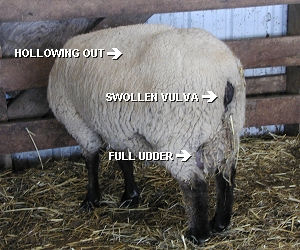
|
The Time is Here!

Watching for tell tale signs that a ewe is going into labor has become a ritual in the barn this time of year. In most cases, the ewe will separate herself from the flock, finding a quiet place to go into labor. She will also stop eating and chewing her cudd once labor has begun.

Physical changes begin to take place as well. She will begin to hollow out in front of the hook bones as the lamb(s) move into the birth canal, her vulva will become swollen, and her udder will begin filling with milk and become tight.
|
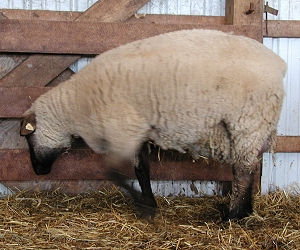
|
It is not unusual for the ewe to keep getting up and down several times as she prepares to lamb. Pawing at the ground or nesting is another sure sign that labor is about to begin.

At this stage, if she is a first time mother, we will move her into an pen by herself to minimize distractions and nosey inquiries from other momma ewes.
|
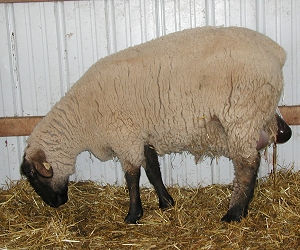
|
Once the waterbag is passed, the presentation of lambs should be forth coming. In this case, the ewe passed her water, and yet, 2 hours later still had not presented the lambs, which can be cause for concern.

Whenever possible, we will give the ewe plenty of time on her own. It has been our experience that the less we interfer, the stronger the bond between mother and lamb. On the other hand, we want to make certain that the waterbag containing the lamb has not been broken overly long, causing complications for the ewe and putting the lamb at risk.
|
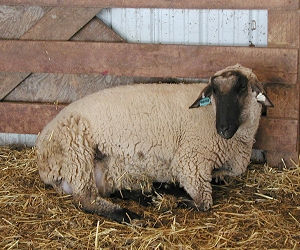
|
The ewe has settle down and begins in earnest to push. As the ewe goes to lamb, our primary concern is that the lambs are presented correctly.

We should see two front feet, toes pointing down, followed by a nose between the front legs. When presented correctly, lambing is simple and straightforward. When there is an abnormal presentation, often times, our assistance is required to minimize injury and stress to mother and lamb.
|
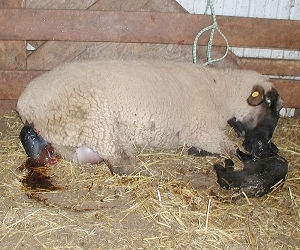
|
In this photo you will notice the halter in the background. Due to the length of time between her water breaking and the presentation of the lamb, I did an internal exam to check to make sure the lamb was in proper position. (Because I was at the barn by myself, the halter was used to gently restrain the ewe so as not to hurt either her or the lamb.) The first lamb, seen in front of her, had one elbow pushed back, causing open shoulder blades which made delivering the lamb more difficult. A quick manual repositioning of the lamb and the ewe lambed on her own.

Here you see the second lamb coming within minutes after the first.
|
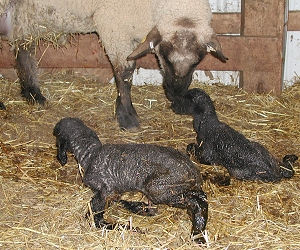
|
Once born, the ewe will immediately begin licking the lambs off. This not only encourages bonding, but the roughness of her tongue increases blood flow in the lambs and stimulates their awareness to their new world. The most fascinating part, to me, at this stage is the special language that develops between the ewe and her lambs. As time goes on, this will allow a mother to clearly call her lambs to her as they grow and are mixed in with larger groups of sheep.

Lambs born should be up and nursing within 20 minutes, sooner if temperatures are below freezing.

The results of this birth were both a healthy boy and a heathly girl. Mother and lambs are doing well!
|
|
Virginia LambTM

The Childs Family ~ P.O. Box 784 ~ Berryville, Virginia 22611

e-mail info@virginialamb.com
Copyright 2011-2005. All Rights Reserved. Web Site Designed by Janet Childs
|

